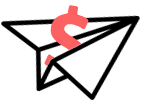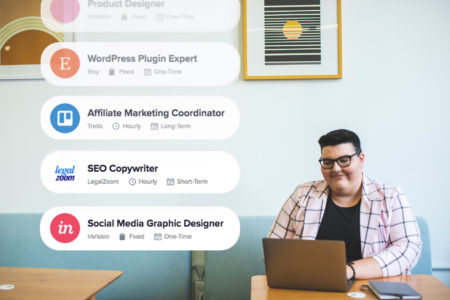Starting fresh in a new city can be both exciting and overwhelming. One of the first things many professionals look for is a productive space to work. Co-working spaces have become an excellent solution for remote workers, freelancers, and small business owners. They provide not only a desk but also a community of like-minded individuals. However, choosing the right one can make all the difference in your work experience. To help you out, we created a clear, straightforward guide to help you find the best co-working spaces in your new city.
Determine Your Work Needs
Before diving into the search for the best co-working spaces, take some time to think about your specific work needs. This is especially important if you’re currently or you plan on transitioning to freelancing from full-time employment.
Start by asking yourself a few key questions: Do you need a private office, or are you comfortable with a shared desk? What kind of equipment will you require, such as printers, meeting rooms, or high-speed internet? Consider whether you need 24/7 access or if you’ll be fine with the standard business hours. If networking and community events are important to you, make sure to factor that in as well. A clear understanding of your needs will help you narrow down the choices and save time in the long run.

Get Weekly Freelance Gigs via Email
Enter your freelancing address and we'll send you a FREE curated list of freelance jobs in your top category every week.
Research Online Reviews
Once you have a general idea of what you’re looking for, start your search online. Use platforms like Google Maps, Yelp, or co-working-specific sites to read reviews from other users and find the best co-working spaces in your new city. These reviews will provide insights into the space’s quality, the services offered, and the overall experience.
Pay attention to any recurring themes in the feedback, whether positive or negative. For example, if many reviews mention poor Wi-Fi or a lack of parking, it’s a good idea to consider that as you explore other options.
Visit Space Directories
There are several online directories dedicated to co-working spaces that can help you find options in your area. Websites like Coworker, Regus, or WeWork offer comprehensive listings in all the top cities for remote work, like Miami and Fort Lauderdale. You can use these websites to learn details about pricing, amenities, and locations.
These directories allow you to filter your search based on your specific needs, such as price range, location, and available services. Many directories also provide photos, giving you a visual sense of the space before you even step inside. Look for clean, well-lit areas with comfortable furniture that can significantly improve your overall comfort and productivity.
Check the Location
Location is a crucial factor when selecting a co-working space. Ideally, you want a space that is easily accessible, either close to your home or well-connected to public transportation. A long commute can take a toll on your time and energy, so it’s worth testing the commute during peak hours before making a final decision.
In addition to the proximity, check if there are cafes, gyms, restaurants, or parks nearby. These can be great places to unwind during breaks or informal networking opportunities with fellow members.
When searching for co-working spaces in your new city, distance from your accommodation can play a significant role. Efficient transitions not only apply to workspace setup but also in how you move items locally. Consider engaging pod moving services, which offer flexible options post-arrival to ease this transition.
Tour the Spaces
Once you’ve narrowed down your options, the next step is to visit the spaces in person. Touring a co-working space lets you see firsthand what it’s like to work there. During the tour, pay attention to factors like noise levels, lighting, and seating arrangements. Is the space quiet enough for focused work on multiple projects, or is there a lot of background noise? Are the workstations comfortable for long hours? Check the temperature control to make sure it’s neither too hot nor too cold. Take note of the cleanliness of the space, including common areas and restrooms. Lastly, evaluate how the staff interacts with visitors; a friendly and helpful team can make a big difference in your experience.
Evaluate the Community
One of the greatest benefits of co-working spaces is the opportunity to connect with others. When visiting potential spaces, observe the atmosphere. Is it collaborative and community-focused, or do people mostly keep to themselves? If you’re feeling lonely in a new city and feel that building connections is important to you, choose a space that fosters an open and friendly environment.

Some co-working spaces host events, workshops, and networking sessions, which can be great opportunities to meet people in your field. The sense of community and the types of professionals working there should align with your goals.
Compare Costs
Co-working spaces come in various price ranges, so it’s important to compare costs based on what you will actually use. Most spaces offer flexible membership options, such as day passes, monthly memberships, or annual contracts. Look at the different pricing tiers and assess what makes the most sense for your work habits and budget.
Keep in mind that some spaces charge extra for meeting rooms, printing services, or access after hours, so make sure you understand the full cost structure before committing.
Test the Internet Speed
Reliable and fast internet is essential for getting work done in a co-working space. When you visit a space, ask for the Wi-Fi password and test the connection on your device. Use a free speed test tool to check the download and upload speeds. Make sure the connection is stable and meets your needs for video calls, large file downloads, and other tasks that require high-speed internet. You don’t want to end up in a space where the Wi-Fi is unreliable, which can seriously hinder your productivity.
Trust Your Gut
Finally, trust your instincts. If a space feels welcoming, organized, and comfortable, it’s likely a good fit. On the other hand, if something feels off—the staff, the environment, or the amenities—don’t hesitate to keep looking. The right co-working space should make you feel motivated, comfortable, and supported in your work.
Final Thoughts
It takes effort to find the best co-working spaces in your new city, but it’s totally worth it. A good space can improve productivity, help you meet new people, and make your workday more enjoyable. By following the steps we’ve outlined for you, you’ll be able to choose a co-working space that supports your professional goals and fits your lifestyle. Happy working!
Meta:
Are you a freelancer who recently moved to a new city? Follow our guide to find the best co-working spaces in your new city.
Keyword:
co-working spaces in your new city

Photos used: https://www.pexels.com/photo/man-in-white-dress-shirt-using-macbook-pro-7256419/

Keep the conversation going...
Over 10,000 of us are having daily conversations over in our free Facebook group and we'd love to see you there. Join us!



